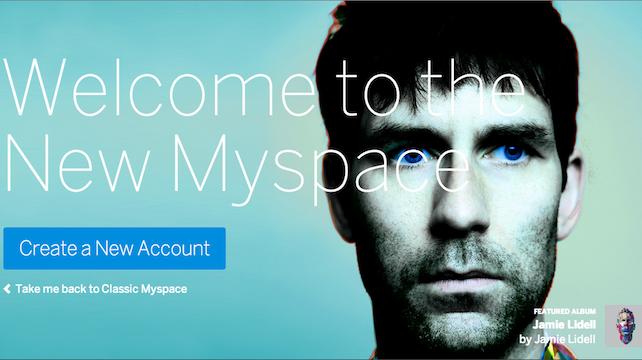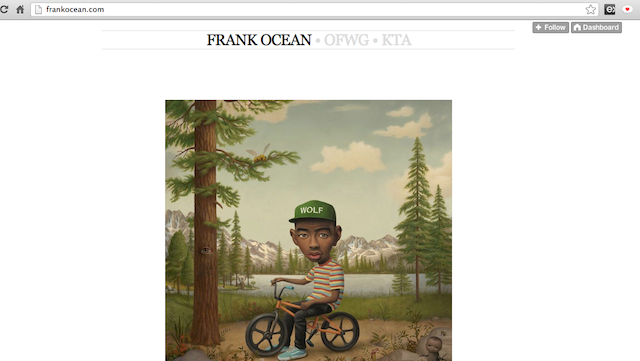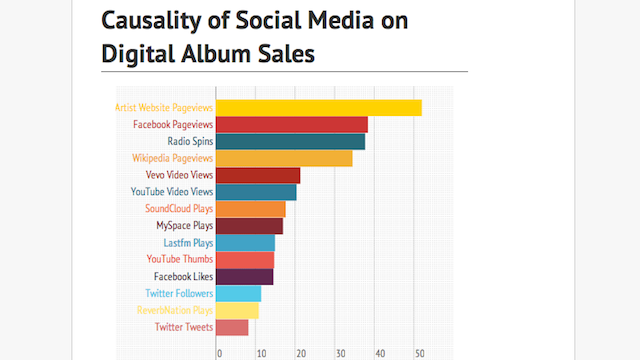The only non-musicians populating the ten most followed Twitter accounts are President Barack Obama and reality megastar Kim Kardashian. And not surprisingly, the top five trends of 2011 were all music related, according to Twitter’s head of music industry relations Tatiana Simonian.
Music’s infiltration into the social media sphere has led many social networks to rely on the music industry for a large portion of engagement and business. Social media is now indispensable to the music industry as well, driving promotion efforts, sales, recognition, and discovery.
Traditional methods of music engagement might be on the outs, but social media has allowed music to be shared, evaluated, and marketed at the speed of light. It’s safe to say that the world’s complete and unwavering infatuation with music isn’t going anywhere soon.
The New Digital Frontier
The traditional music business model used to depend on record sales — and record sales alone. As The Wall Street Journal put it, losing money on touring, merchandising, and radio didn’t matter if your album was selling. Now, once superfluous activities are raking in the big bucks and album sales are becoming less indicative of success. A new music industry based on 0’s and 1’s (that is, digital distribution) also means a promotion and monetization strategy based on the same.
Social media and the viral nature of music has made some artists famous before they even release any actual albums. Pop singer Lana Del Ray was noticed when she and her management created a faux homemade music video for her song “Video Games,” eventually leading her to the opportunity to perform on “Saturday Night Live” before she even released her first album.
Social Music: An Industry in Itself
The digitalization of the music industry has also made way for many social networks that revolve completely around music. Services like Pandora, Spotify, Rdio, and SoundCloud are fundamentally changing the way people listen to and engage with music. In 2011, Justin Timberlake and Specific Media Group purchased the nearly defunct Myspace for $35 million, and a little over a year later unveiled a new Myspace that almost entirely centered around music. Also in 2011, Foursquare partnered with live music discovery platform SongKick, making it possible for Foursquare users to check in to live events and concerts.
Social media networks are not only valuable for artists and their fans, they’re also extremely effective for advertisers. Consumers’ tastes in music can say a lot about them (and ultimately their buying behaviors), and advertisers are taking advantage of music’s correlation with target demographics. Music social networks are teeming with ad space, and the prevalence of audio and video media has opened the door to many new and engaging forms of advertising.
Honing An Image
In addition to promoting their music, artists use social media to shape their images and build their brands. Many musicians’ social media presences are carefully crafted and curated, and some are managed by agencies and managers. Some take more personal approaches, and platforms like Tumblr have allowed artists to speak to their fans and share what’s important to them.
Frank Ocean made headlines last year when he took to his Tumblr to write about a relationship he had with another man, utilizing a social platform to reveal a large part of his life that was previously unknown.
Social media has also provided musicians with an easy way to land sponsorships and brand partnerships, and an even easier way to actually promote products. A single celebrity sponsored tweet can bring anywhere from $2,500 to $8,000. Los Angeles-based Ad.ly has made a business out of connecting brands and celebrities through a simple online platform. By partnering with celebrities, brands are equipped with an even bigger microphone to reach their customers, in addition to a celebrity’s stamp of approval.
Building Fan Loyalty
Social platforms have also made it exceptionally easy for musicians to connect with their fan bases directly. Artists can offer sneak peeks, photos, exclusive opportunities and sweepstakes to their social media fans. Electro-house music producer Deadmau5 even incorporated vocals a fan sent him over Twitter into his song “The Veldt.” Rolling Stone later named it one of the best tracks of 2012.
Chicago-based guitarist and singer Charles Otto is currently a member of three different bands, one being a popular Talking Heads cover band called “This Must Be The Band.” The band has an enormous following in Chicago and sells out most shows. “Social media is pretty much the only way for This Must be the Band, Grood, and DJ noDJ (his other two bands) to actively promote shows or music,” said Otto. “It’s also where everyone goes to connect with us before shows for requests and show information.”
Vanessa Robinson, Director of Marketing for This Must Be The Band, is responsible for the band’s very active Facebook presence. She said interaction is the number one benefit she sees coming from social media. “I can use websites to post shows, news updates, [and] pictures all day long. But on Facebook, fans and friends can respond, repost, comment, and share. They can tell us their experiences.”
Album Sales: Causation vs. Correlation
Social media has obviously had massive effects on the music industry, but as with any marketing activity, people are asking to see the numbers. The Next Big Sound, a New York-based music data and analytics company, recently conducted a study exploring every facet of the effects of social media on record sales. Using data from the past three years, the study explores causality and correlation of album sales and social media.
The study found that Wikipedia page views, Internet radio impressions, and Last.fm plays showed the highest correlation of digital album sales during the first week of an album’s release. Wikipedia is consistently on the top of the list, which The Next Big Sound believes is attributed to consumers’ need for more information on artists before they invest in their music.
As for causation (see the figure above), artist website page views, Facebook Page views, and radio spins had the highest causality in relation to digital album sales. Facebook Page views affected digital album sales for 38.4 percent of artists, while fan tweets affected 8.3 percent of artists’ digital album sales. Those numbers are bound to be worth the investment for many artists and their labels, but they’re probably not even the whole story. Social media ROI has always been a point of contention for many marketers, but more people are starting to realize that numbers don’t do it justice.
What do you think about social media’s increasing relationship with the music business? Share your thoughts in the comments below.
[Image credits: Frédéric de Villamil, U.S. Department of Agriculture, John Benson]

